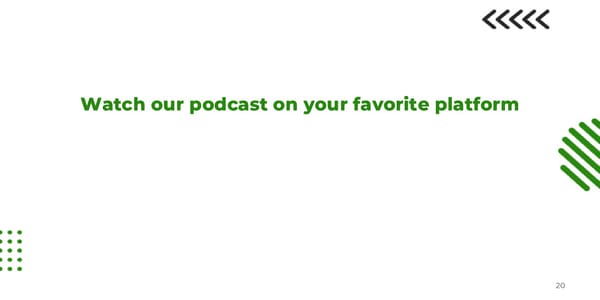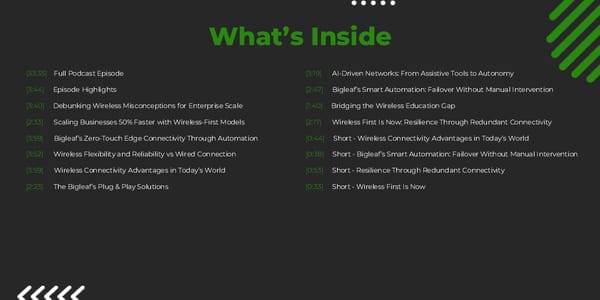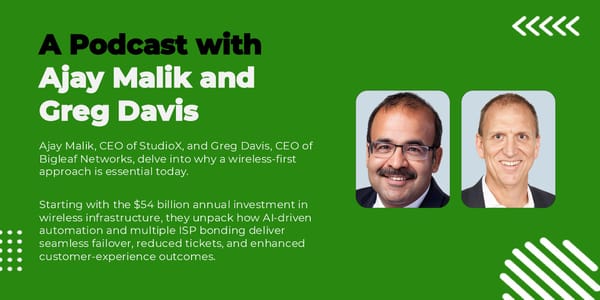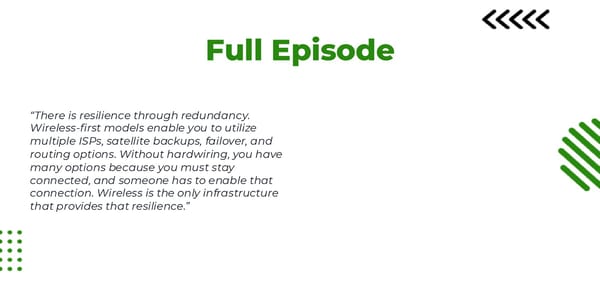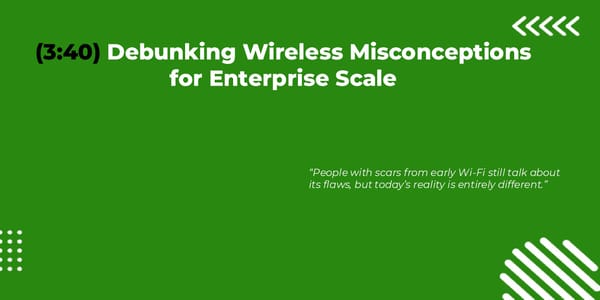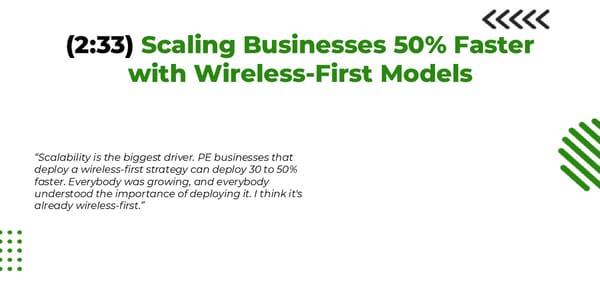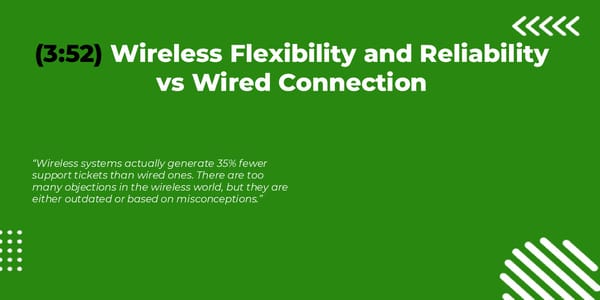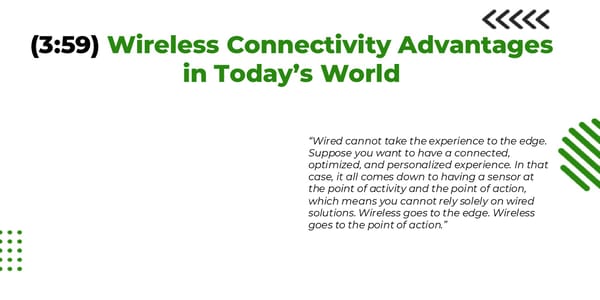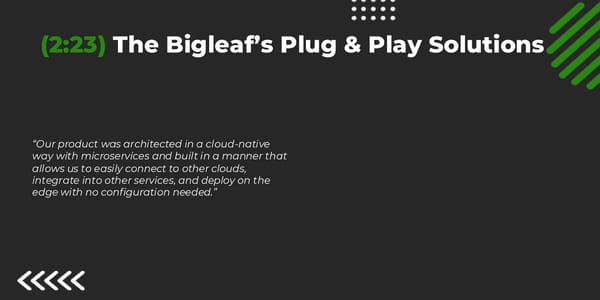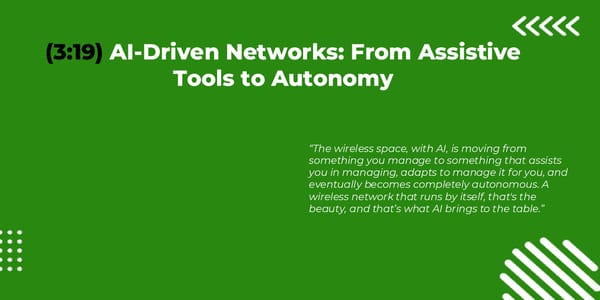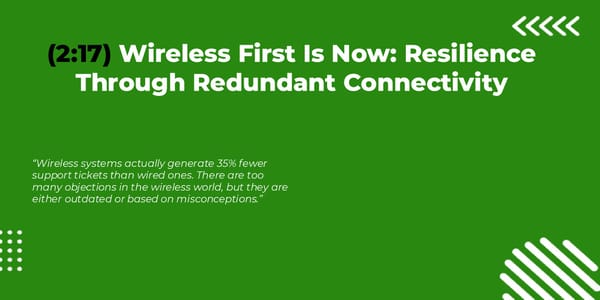Ajay Malik and Greg Davis - You Can't Grow Without Going Wireless First
Ajay Malik, CEO of StudioX, and Greg Davis, CEO of Bigleaf Networks, delve into why a wireless-first approach is essential today. Starting with the $54 billion annual investment in wireless infrastructure, they unpack how AI-driven automation and multiple ISP bonding deliver seamless failover, reduced tickets, and enhanced customer-experience outcomes.
WOW-24-7
Contact Centers
EPISODE: Ajay Malik CEO @ StudioX You Can’t Grow Without Going Wireless First Episode 21 Greg Davis CEO @ Bigleaf Networks
What’s Inside [33:35] Full Podcast Episode [3:44] Episode Highlights [3:40] Debunking Wireless Misconceptions for Enterprise Scale [2:33] Scaling Businesses 50% Faster with Wireless-First Models [3:59] Bigleaf’s Zero-Touch Edge Connectivity Through Automation [3:52] Wireless Flexibility and Reliability vs Wired Connection [3:59] Wireless Connectivity Advantages in Today’s World [2:23] The Bigleaf’s Plug & Play Solutions [3:19] AI-Driven Networks: From Assistive Tools to Autonomy [2:47] Bigleaf’s Smart Automation: Failover Without Manual Intervention [1:40] Bridging the Wireless Education Gap [2:17] Wireless First Is Now: Resilience Through Redundant Connectivity [0:44] Short - Wireless Connectivity Advantages in Today’s World [0:38] Short - Bigleaf’s Smart Automation: Failover Without Manual Intervention [0:53] Short - Resilience Through Redundant Connectivity [0:33] Short - Wireless First Is Now
EPISODE: A Podcast with Ajay Malik and Greg Davis Ajay Malik, CEO of StudioX, and Greg Davis, CEO of Bigleaf Networks, delve into why a wireless-first approach is essential today. Starting with the $54 billion annual investment in wireless infrastructure, they unpack how AI-driven automation and multiple ISP bonding deliver seamless failover, reduced tickets, and enhanced customer-experience outcomes.
Full Episode “There is resilience through redundancy. Wireless-first models enable you to utilize multiple ISPs, satellite backups, failover, and routing options. Without hardwiring, you have many options because you must stay connected, and someone has to enable that connection. Wireless is the only infrastructure that provides that resilience.”
5 (3:44) Episode Highlights
(3:40) Debunking Wireless Misconceptions for Enterprise Scale “People with scars from early Wi-Fi still talk about its flaws, but today’s reality is entirely different.”
(2:33) Scaling Businesses 50% Faster with Wireless-First Models “Scalability is the biggest driver. PE businesses that deploy a wireless-first strategy can deploy 30 to 50% faster. Everybody was growing, and everybody understood the importance of deploying it. I think it's already wireless-first.”
8 (3:59) Bigleaf’s Zero-Touch Edge Connectivity Through Automation “The automation on Bigleaf allows us to have a zero-touch scenario that leverages and bonds existing connections, such as a Starlink circuit or 5G connections, to enable failover and similar functions immediately at the edge, without having to roll trucks or deploy resources.”
(3:52) Wireless Flexibility and Reliability vs Wired Connection “Wireless systems actually generate 35% fewer support tickets than wired ones. There are too many objections in the wireless world, but they are either outdated or based on misconceptions.”
(3:59) Wireless Connectivity Advantages in Today’s World “Wired cannot take the experience to the edge. Suppose you want to have a connected, optimized, and personalized experience. In that case, it all comes down to having a sensor at the point of activity and the point of action, which means you cannot rely solely on wired solutions. Wireless goes to the edge. Wireless goes to the point of action.”
11 (2:23) The Bigleaf’s Plug & Play Solutions “Our product was architected in a cloud-native way with microservices and built in a manner that allows us to easily connect to other clouds, integrate into other services, and deploy on the edge with no configuration needed.”
(3:19) AI-Driven Networks: From Assistive Tools to Autonomy “The wireless space, with AI, is moving from something you manage to something that assists you in managing, adapts to manage it for you, and eventually becomes completely autonomous. A wireless network that runs by itself, that's the beauty, and that’s what AI brings to the table.”
(2:47) Bigleaf’s Smart Automation: Failover Without Manual Intervention “Bigleaf is a highly automated platform. We also have the ability, through automation, machine learning, and intelligence, to route traffic from millisecond to millisecond over the most performant network. We've essentially eliminated the need for manual network operations and policy-based management. Our software self-tunes continuously, and it does so for all customers at once.”
14 (1:40) Bridging the Wireless Education Gap “Everybody assumes wireless exists, but they want demos to believe and adopt it truly.”
(2:17) Wireless First Is Now: Resilience Through Redundant Connectivity “Wireless systems actually generate 35% fewer support tickets than wired ones. There are too many objections in the wireless world, but they are either outdated or based on misconceptions.”
YOUTUBE SHORT: “Wired cannot take the experience to the edge. Suppose you want to have a connected, optimized, and personalized experience. In that case, it all comes down to having a sensor at the point of activity and the point of action, which means you cannot rely solely on wired solutions. Wireless goes to the edge. Wireless goes to the point of action.” - Ajay Malik
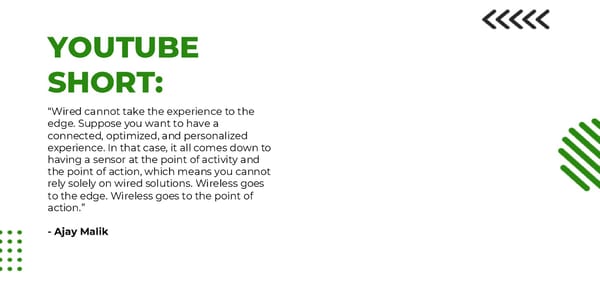
17 YOUTUBE SHORT: “Bigleaf is a highly automated platform. We also have the ability, through automation, machine learning, and intelligence, to route traffic from millisecond to millisecond over the most performant network. We've essentially eliminated the need for manual network operations and policy-based management. Our software self-tunes continuously, and it does so for all customers at once.” - Greg Davis
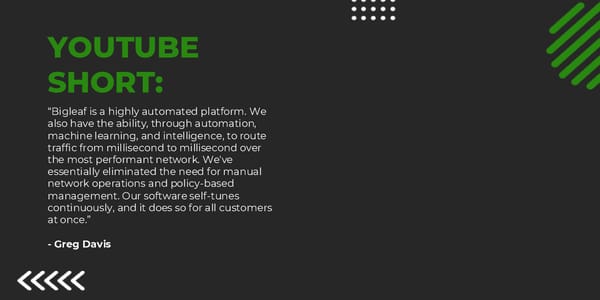
YOUTUBE SHORT: “There is resilience through redundancy. Wireless-first models enable you to utilize multiple ISPs, satellite backups, failover, and routing options. Without hardwiring, you have many options because you must stay connected, and someone has to enable that connection. Wireless is the only infrastructure that provides that resilience.” - Ajay Malik

19 YOUTUBE SHORT: “Wireless-first isn't necessarily the future, it's now. These networks can outperform traditional ones that require gear tuning and expensive circuits. Expect more from your network than you do today in terms of velocity, reach, and stability. It's available, and it's not very expensive. It's a cool time to get connected.” - Greg Davis
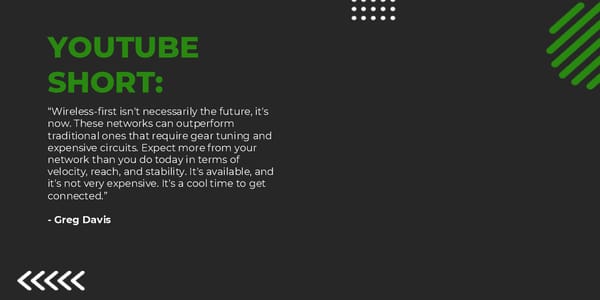
20 Watch our podcast on your favorite platform
